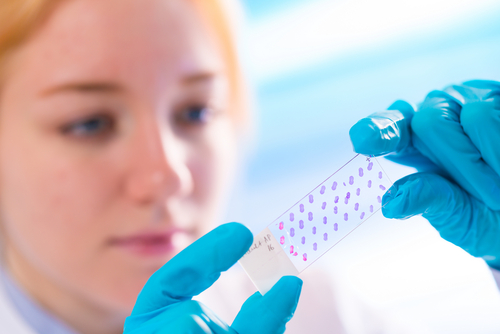Pituitary Tissue Analysis During Surgery Improves Cushing’s Diagnosis, Study Says
Written by |

Pituitary gland tissue analysis during surgery can help confirm a Cushing’s disease diagnosis and define the best strategy to treat patients with small pituitary tumors, according to a study.
The study, “The Utility of Intraoperative Cytological Smear and Frozen Section in the Surgical Management of Patients with Cushing’s Disease due to Pituitary Microadenomas,” was published in the journal Endocrine Pathology.
Cushing’s disease is characterized by increased production of cortisol as a result of the overgrowth of benign tumors in the pituitary gland that secrete too much of the adrenocorticotrophic hormone (ACTH).
Surgical resection of ACTH-producing tumors remains the most effective treatment approach, but most tumors are difficult to detect, hindering correct diagnosis and treatment.
A team from Harvard Medical School explored the diagnostic potential of different pituitary gland tissue analysis strategies performed during surgery, and how they could help surgeons better delineate the most accurate treatment path.
Researchers reviewed the records of 341 people with Cushing’s disease with microadenomas who had surgery at a single institution between 1999 and 2017. In total, 403 surgeries were performed; 302 were first surgeries after diagnosis, 25 early second operations, and 76 surgeries after disease recurrence.
Pituitary tissue samples were collected in all surgeries. These were frozen and stored directly or preserved in paraffin. These preservation approaches allow pathologists to see, using a microscope, detailed tissue structures and cells, as well as other important components such as enzymes and hormones.
Researchers also collected tissue smears from 246 surgeries, in which a small portion of tissue is smashed and its cell content analyzed by microscope.
Paraffin samples retain tissue architecture much better than frozen or smear samples, and allow pathologists to determine whether the tumor is indeed producing excess ACTH and causing Cushing’s disease. However, this approach takes considerably more time, which means that a diagnosis would only be made after the surgery was finished.
Smear samples, on the other hand, would allow pathologists to define a diagnosis during surgery.
Also, “intraoperative frozen sections can be beneficial to the surgeon by confirming the presence of abnormal tumor tissue, evaluating the adequacy of resection, and limiting unnecessary dissection of the pituitary gland with its attendant risk of pituitary insufficiency,” researchers stated.
A comparison of the results from each sample type revealed that frozen and paraffin samples retrieved the same diagnosis in in 96.8% of cases, and the concordance rate between cytological smear and paraffin samples was 86.6%.
In 80.9% of the cases, a final diagnostic with confirmation of the nature of the disease was obtained using at least one of these tissue analysis methods in addition to magnetic resonance imaging (MRI) data.
Since the introduction of pituitary tissue analysis during surgery in 1999, the number of confirmed disease-associated adenoma cases increased from 67.1% (between 1990 and 1998) to 80.9%.
Available pooled data confirmed that tissue smears can provide very accurate information (ranging from 79.0 to 94.9%) for the diagnosis of central nervous system tumors, including pituitary adenomas.
However, this diagnostic tool was less reliable — having only 57% accuracy — when applied to early second surgeries. The team thinks this could be because of disruption of the tissue as a consequence of the previous surgical exploration.
Overall, these results demonstrate that both smear tissue analysis and frozen samples obtained during surgical exploration for Cushing’s disease “are accurate in the pathologic confirmation of tumor tissue.”
The overall diagnosis rate of Cushing’s disease due to a microadenoma “appears to improve by combining intraoperative cytology with frozen section and paraffin pathology,” researchers concluded.





